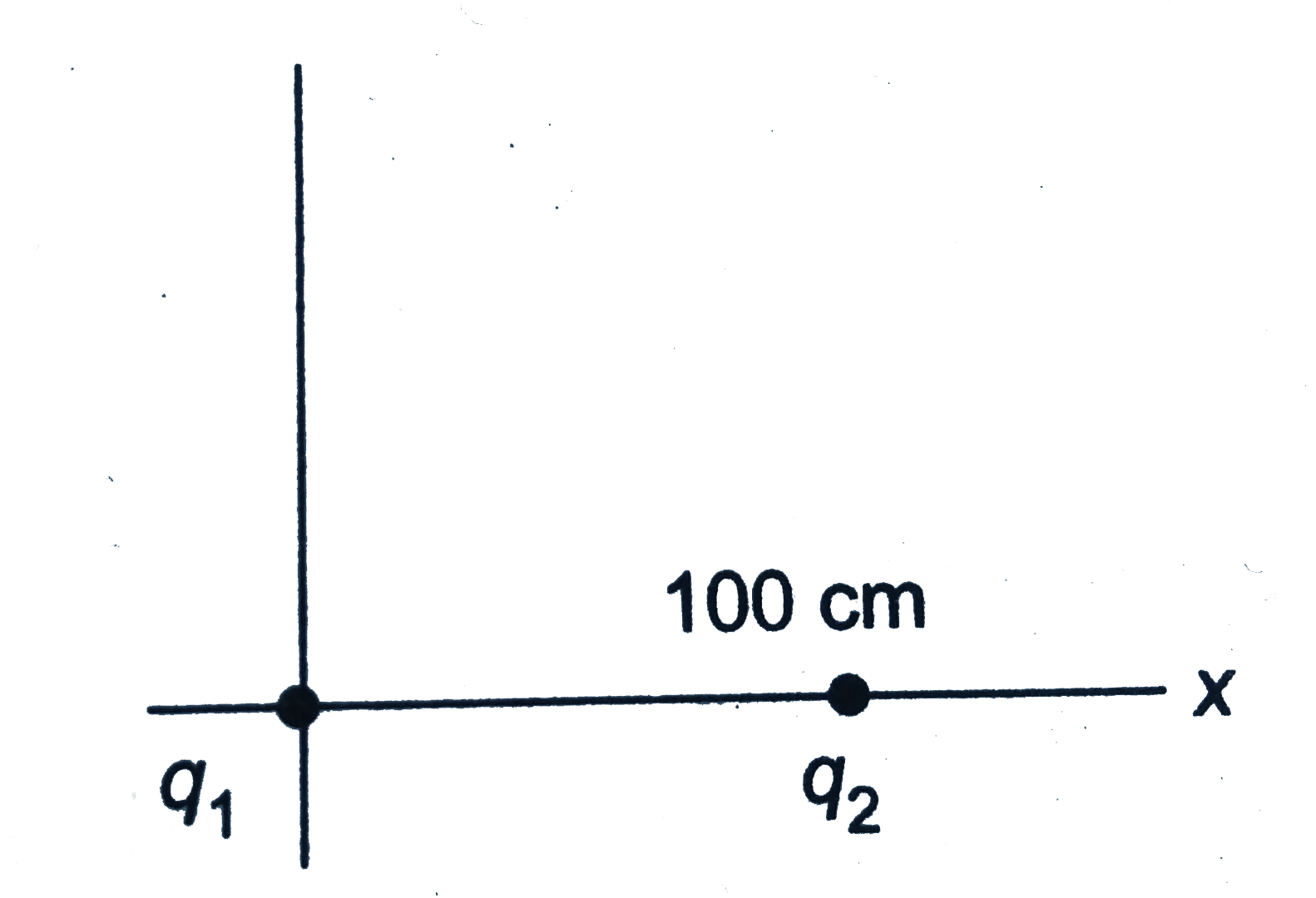A heavy point of mass 15 kg is placed at the origin of coordinate axis. Find the gravitational potential at a point located at x=5cm on X-axis.
Given, M=15 kg
Gravitation potential at x=5m
V=−GMx=−6.67×10−11×155=−20.01×10−11J kg−1.
Topper's Solved these Questions
- BOOK - DC PANDEYCHAPTER - GRAVITATIONEXERCISE - Solved Examples16videos
GRAVITATION
- BOOK - DC PANDEYCHAPTER - GRAVITATIONEXERCISE - Miscellaneous Examples8videos
GRAVITATION
- BOOK - DC PANDEYCHAPTER - GENERAL PHYSICSEXERCISE - INTEGER_TYPE2videos
GENERAL PHYSICS
- BOOK - DC PANDEYCHAPTER - KINEMATICSEXERCISE - INTEGER_TYPE11videos
KINEMATICS
Similar Questions
The gravitational field in a certain region is given as
→E=(3Nkg−1)ˆi+(5Nkg−1)ˆj
(a) What will be magnitude of gravitational force acting on a particle of mass 3 g which is placed at the origin ?
(b) What will be gravitational potential at point (12m, 0) and (0, 6m) considering that potential at origin is zero ?
(c ) A particle of mass 3 kg is moved from the origin to the point (9m, 4m). Calculate the change of gravitational potential energy.
(d) If the above particle is moved from (5m, 0) to (0, 5m), then find the change in potential energy.View SolutionMass of 10 kg is distributed uniformly over a ring of radius 1m. Find the gravitational potential at a point lies on the axis of the ring at a distance of 1m from the centre.
View Solution
Knowledge Check
- Question 1 - Select One
A particle of mass 5 kg is placed in a field of gravitational potential
v=(7x2−21x)J/kg . Then its motionAis SHM with angular frequency 1.67rad/sBis SHM with angular frequency 3.74rad/sCIs oscillarotry but no SHMDis SHM with amplitude 5.5m - Question 2 - Select One
The gravitational force on a body of mass 1.5 kg situated at a point is 45 M . The gravitational field intensity at that point is .
APotential energy will increaseBKinetic energy will decreaseCTotal energy will increaseDAll of these
Two point masses 1 kg and 4 kg are separated by a distance of 10 cm. Find gravitational potential energy of the two point masses.
View SolutionIn deep space, sphere A of mass 20 kg is located at the origin of an x axis and sphere B of mass 10 kg is located on the axis at x = 0.95 m. Sphere B is released from rest while sphere A is held at the origin. (a) What is the gravitational potential energy of the two-sphere system just as B is released? (b) What is the kinetic energy of B when it has moved 0.15 m toward A?
View SolutionThe gravitationasl fiedl in a region is given by →E=(5Nkg−1)→i+(12nk−1)→j.. a.find the magnitude of the gravitational force acting on a particle of mass 2 kg th gravittional fore actiing on a particle of mass 2 kg placed at the origin. B. Find the potential at teh points (12m,0) and (o,5m) if the potential at teh origin is taken to be zero. C. Find the change in gravitationa potential energyif a particle of mass 2 kg is taken from the origin to teh point (12m,5m). d. Find the change in potential energy if the particle is taken from (12m,0) to (0,5,m).
View SolutionA point charge q1=+2μC is placed at the origin of coordinates. A second charge, q2=−3μC, is placed on the x-axis at x=100cm. At what point (or points) on the x-axis will the absolute potential be zero?
 View Solution
View SolutionGive the coordinates of a point on the x-axis and a point on the y-axis.
View SolutionA short electric dipole is situated at the origin of coordinate axis with its axis along x-axis and equator along y-axis. It is found that the magnitudes of the electric intensity and electric potential due to the dipole are equal at a point distance r=√5m from origin. Find the position vector of the point in first quadrant.
View Solution

